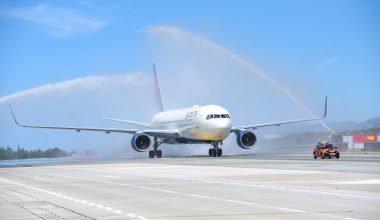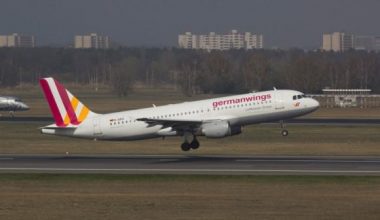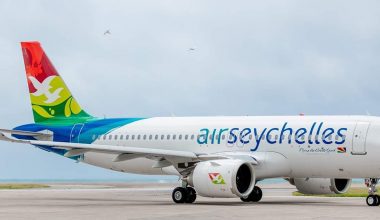Norwegian Air Shuttle, operating as Norwegian, is a well-established brand in the Scandinavian aviation industry. It is the airline to count on for affordable tickets to Norway, across the Nordics, and to popular European cities. Norwegian Airlines is a go-to carrier for European travelers who are willing to forgo some customary amenities in trade for cheap flights. While the carrier follows low-cost philosophy, it ensures greater choice and flexibility for customers throughout their journey.
Norwegian operates a dedicated short-haul network concentrating on domestic, intra-nordic, and typical European (business + leisure) destinations. The discount carrier is headquartered at Diamanten Fornebu and maintains a well-developed operating base system all across Europe.

Norwegian Airlines Overview
Norwegian Air Shuttle is a 30-year-old Norway-based LCC specializing in regional European travel. Founded on 22 January 1993, Norwegian began its life as a regional airline. Nine years later, the carrier rolled out the low-cost business model to compete on the busiest domestic routes using Boeing 737 aircraft.
In the early 2010s, Norwegian Airlines pursued an aggressive growth strategy with the launch of short-haul services across Europe. It then entered the long-haul sector, offering affordable services between Europe and North America. As transatlantic routes were characterized by a lack of competition and high fares, the US market seemed a good fit for the carrier.
Norweigan’s overarching business model was soon noticed by passengers seeking low-cost airfare across the Atlantic Ocean. Shortly, the carrier became an airline of choice for budget-conscious travelers and a key player in long-haul discount market.
Also Read: Norwegian to expand its fleet size with 13 more Boeing 737-800s
In 2018, the no-frills carrier changed its strategy to focus on profitability. Norwegian adopted restructuring measures for the right sizing of the airline in line with global industry trends. The restructuring saw shutdown of several crew bases, cancellation of Airbus A320 family orders, and leadership changes.
The 2020 outbreak of the coronavirus pandemic seriously affected Norwegian Air Shuttle’s revenue and operations. The low-cost carrier fell victim to significant downturn in passenger traffic and its cash flow dwindled. In order to improve its financial standings and simplify operations, the carrier announced to suspend its all intercontinental services. The once-dominant Norwegian Airlines exited lucrative transatlantic market to focus on short-haul European route network.
Across 3 decades of history, Norwegian has firmly established itself as a valuable brand in European air market. It offers appealingly low fares for customers traveling domestically, across the Nordics and key destinations throughout Europe.
Position of Norwegian Airlines
Norwegian Airlines is the second-largest carrier in Norway and Scandinavia as a whole in terms of destinations and fleet size. It maintains an independent fleet size of 45 aircraft and offers low-cost flights to more than 100 destinations.
When it comes to annual passenger numbers, it is the largest in the country and the ninth-largest in Europe. Norwegian Airlines carried 36.2 million passengers in 2019 and 17.87 million passengers in 2022.

The Fornebu-headquartered airline makes it to the 4th spot in the list of largest European LCCs by total scheduled and chartered passengers. Irish carrier Ryanair, British LCC EasyJet and Hungary-based Wizz Air maintain the first, second, and third position respectiviely.
Destinations served by Norwegian Airlines
Norwegian operates a dedicated short-haul route network focusing on connecting prolific ranges of destinations in Norway and beyond. The carrier holds a fair share in domestic market with high-frequency flight schedules within Scandinavia and Finland. Besides, it serves business routes like London and vacation routes in the Mediterranean and the Canary Islands.
Also Read: Norwegian Air to start world longest low-cost flights
Norwegian route map is dotted with point-to-point flights from operating bases in Oslo, Bergen, Stavanger, Trondheim, Copenhagen, Stockholm, Helsinki, Malaga, Alicante, and Riga.
- Domestic routes
Norwegian Air Shuttle has a strong domestic presence with direct services to 16 cities. Key domestic routes include Alesund, Alta, Andenes, Bergen, Bodo, Haugesund, Oslo, Molde, Moss, Sandefjord, Tromso, Trondheim, etc.
The budget carrier operates the highest frequencies on Oslo-Bergen and Oslo-Trondheim routes with 15 daily round-trips.
- Intra-Nordic routes
Norwegian Air Shuttle is a prominent Nordic carrier and has been cultivating Northern European market for years. The no-frills airline offers a robust flight schedule to the Nordic countries of Denmark, Finland, Iceland, Norway, and Sweden.
Notable Nordic destinations cover:
- Denmark (Aalbord, Billund, Copenhagen)
- Finland (Helsinki, Kemi, Rovaniemi)
- Iceland (Reykjavik)
- Sweden (Gothenburg, Lulea, Kiruna, Malmo, Stockholm, Umea, etc.)
Norwegian’s lucrative intra-Nordic routes include ‘the capital triangle’ between Oslo, Stockholm, and Copenhagen. This particular route is popular among both corporate and holiday travelers and provides extensive traffic for the carrier.

- Key European leisure and business destinations
On top of domestic and intra-Nordic routes, Norwegian Airlines also spreads its wings to prominent European destinations. The discount-price airline pivots to scheduled flights on both business and holiday routes across the continent. Key destinations include:
- Croatia (Dubrovnik, Pula, Spilt, and Zagreb)
- France (Bastia, Nice, Paris)
- Germany (Berlin, Dusseldorf, Hamburg, and Munich)
- Italy (Milan and Rome)
- Spain (Barcelona, Las Palmas, Madrid, Palma de Mallorca
- United Kingdom (Edinburgh, London Gatwick, and Manchester) etc.
Fleet of Norwegian Air Shuttle
Norwegian Airlines (excluding its integrated subsidiaries) operates a fleet of 45 all-Boeing jets. The low-cost carrier solely operates Boeing’s best-selling 737 family jets.
The vast majority of Norwegian planes are examples of popular Boeing 737-800 model. The discount carrier has 39 fuel-efficient B737-800 jets, used for short-haul operations. Powered by two FFM 56-7B26 engines, the jet can fly at the cruise speed of 815-850kph for far up to 2,935 nmi (5,436km).
Norwegian’s Boeing 737-800 is available in two seating versions: 186-seater and 189-seater. Passengers will appreciate the legroom, in-flight Wi-Fi, and distinctive cabin featuring sleek Boeing Sky Interior design.
In addition to 39 B737-800 units, Norwegian has 6 other Boeing 737 family jets belonging to Max 8 model. These newest generation of jets are extra fuel-efficient with advanced technology winglets and CFM International LEAP-1B engines. Norwegian Boeing 737 Max 8 has space for two pilots, four flight attendants, and 189 passengers.

Norwegian’s Boeing aircraft wear a distinctive livery of white with a red nose and hence are referred to as ‘Red Nose’. The tail fins on these aircraft feature portraits of heroes who have pushed boundaries, lived an accomplished life, and positively influenced others.
These modern and fuel-efficient jets support Norwegian’s low-cost business model. They also contribute to the advancement of Norwegian’s goals toward a more sustainable future. The no-frills carrier aims to become the most carbon and resource efficient airline and reduce CO2 emissions by 45% by 2030.
Norwegian Air Shuttle subsidiaries
Norwegian Air Shuttle has two fully-integrated subsidiaries named Norwegian Air Sweden and Norwegian Air Norway. Both legally incorporate subsidiaries hold a separate air operator’s certificate (AOC) but share Norwegian’s corporate identity to operate flights on behalf of the company.
Norwegian Air Sweden offers scheduled services from multiple European bases outside of Norway using Sweden-registered Boeing 737 jets. It maintains bases in Alicante, Copenhagen, Helsinki, Malaga, and Stockholm-Arlanda for the Norwegian Group’s collective route network.
The Sweden-based subsidiary operates a fleet of 35 Boeing aircraft including 28 Boeing 737-800s and 7 B737 Max 8s.
Norwegian Air Norway, the wholly-integrated Norwegian subsidiary, is based at Oslo Airport, Gardermoen. It conducts flights to and from Oslo in conjunction with its parent company. It has a single Norway-registered Boeing 737-800 jet with a seating capacity of 186 passengers.
Norwegian’s departure from the transatlantic market
As a part of its expansion strategy, Norwegian Air Shuttle muscled its way into the trans-Atlantic segment in mid-2010s. The carrier introduced low pricing and disrupted the economics of key transatlantic routes. Norwegian’s low-cost competition on transoceanic flights largely benefitted customers who, for years, were grossly overcharged by legacy carriers. As a result, the relative upstart discount carrier became the 10th-largest trans-Atlantic airline just three and half years later.
Norwegian initially deployed Boeing 737-800 aircraft to perform long-haul flights on the Europe-North American routes. Later, the Norwegian low-cost carrier switched its airliner of choice for transatlantic routes to Boeing 737 Max aircraft.
Despite being a major intercontinental player, the carrier struggled financially on transoceanic routes due to massive expenses and Boeing aircraft-related operational issues. Norwegian was somehow hanging on the long-haul transatlantic market until the pandemic-induced travel restrictions exacerbated the situation. In January 2021, Norwegian Air Shuttle departed from the transoceanic budget travel market, easing pressure on high-fare legacy carriers competing on those routes.

Former long-haul destinations served by Norwegian Air Shuttle
At its peak, Norwegian Air Shuttle shuttled passengers across the Atlantic pond to 19 US destinations. These include Austin, Baltimore, Boston, Chicago, Denver, Fort Lauderdale, Hartford, Las Vegas, Los Angeles, Miami, New York City, Newark, Newburgh, Oakland, Orlando, Providence, San Francisco, Seattle, and Tampa.
Beyond the American landmass, Norwegian also had presence in Montreal and Hamilton in Canada.
The long-haul route map of Norwegian not just covered North American destinations; it also included South America and Asia. The carrier’s South American network spanned destinations in Brazil (Rio de Janeiro) and Argentina (Buenos Aires, Cordoba, Mendoza, Neuquen, Puerto Iguazu, Salta, Ushuaia, San Carlos de Bariloche, etc.)
Likewise, Norwegian’s Asian route map covered Singapore, Thailand (Bangkok and Krabi), and the United Arab Emirates (Dubai). None of these Norwegian routes are in existence today.






